Abstract
Changes in free space of banana tissue during ripening were measured using radioisotopes. Free space increased significantly about 44 hours before the onset of, and rose exponentially during the respiratory climacteric. The increase in free space indicates a progressive increase in the proportion of cells which becomes completely permeable to solutes in the ambient solution by simple diffusion. At the respiratory peak the tissue was essentially 100% free space to mannitol, sucrose, fructose and chloride.
The capacity for active uptake of solutes declined about one day before the onset of the respiratory rise and fell to a very low level by the respiratory peak.
There was no change in the level of protein or amino acids during ripening. Assays of tissue sections before and after washing indicated an increased rate of leakage of amino acids during ripening.
Studies of incorporation of 3 concentrations of 14C-labeled leucine and phenylalanine indicated marked changes in the size and specific activity of the amino acid pool at the site of protein synthesis just prior to and during the climacteric rise, due to a diffusive mixing of the labeled substrate with the previously sequestered endogenous, unlabeled pool of substrate. The use of a high concentration of exogenous substrate (above saturation for uptake) resulted in an apparent constant specific activity of the metabolic pool through the ripening period. Data from these studies indicated a decline in amino acid incorporation during the climacteric.
It was concluded that the initiation of permeability changes marks the onset of senescence in banana. The causative relations between alterations in permeability, the respiratory rise and other chemical changes attending fruit ripening are discussed.
Full text
PDF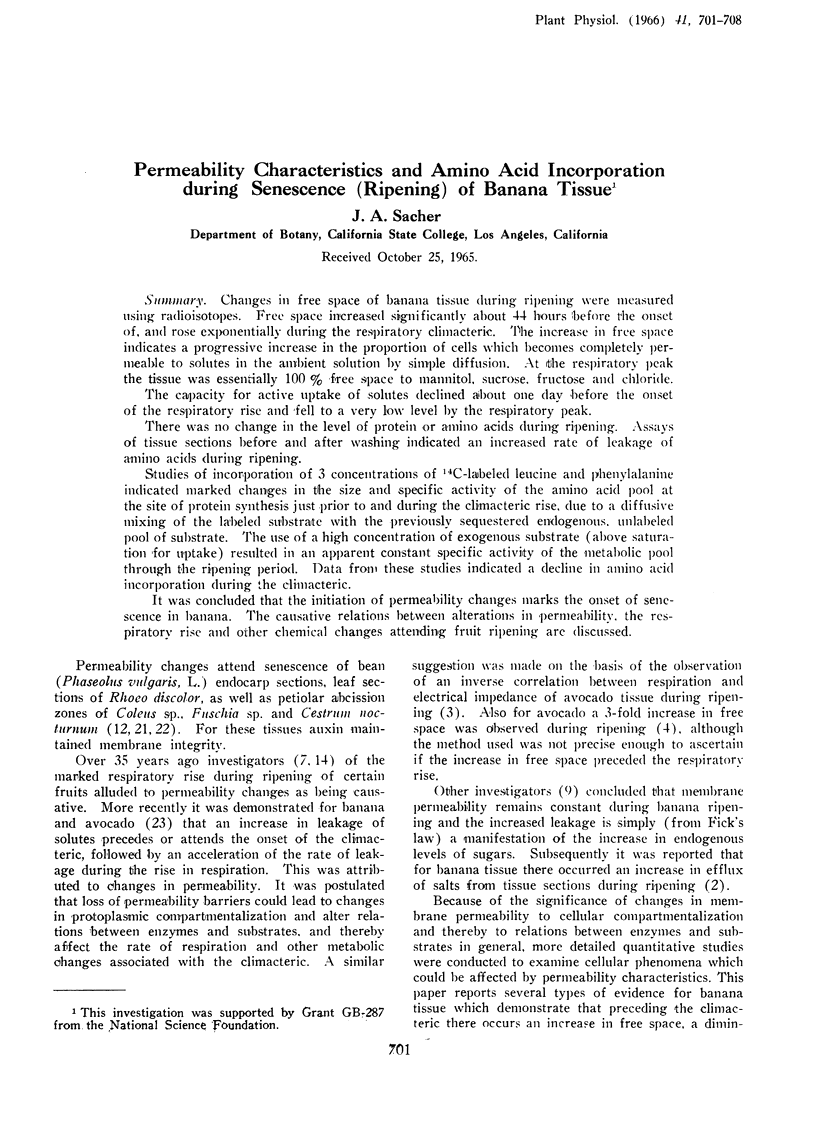
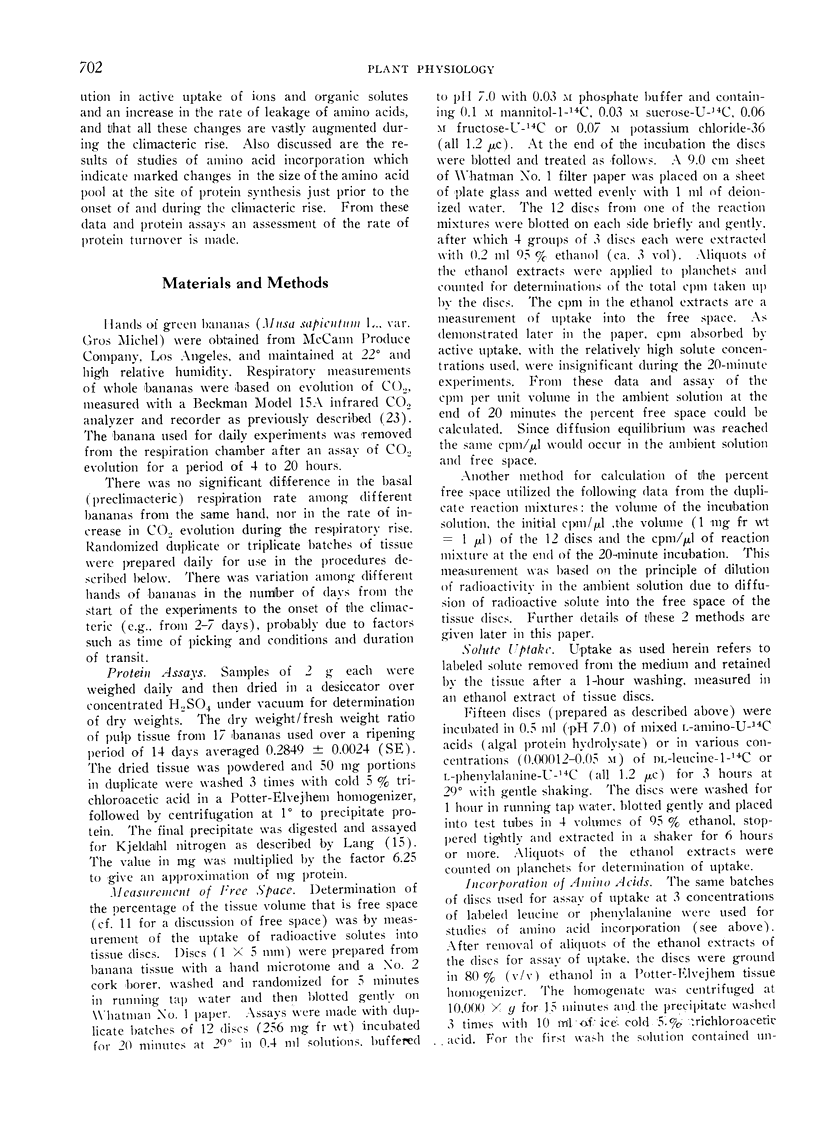
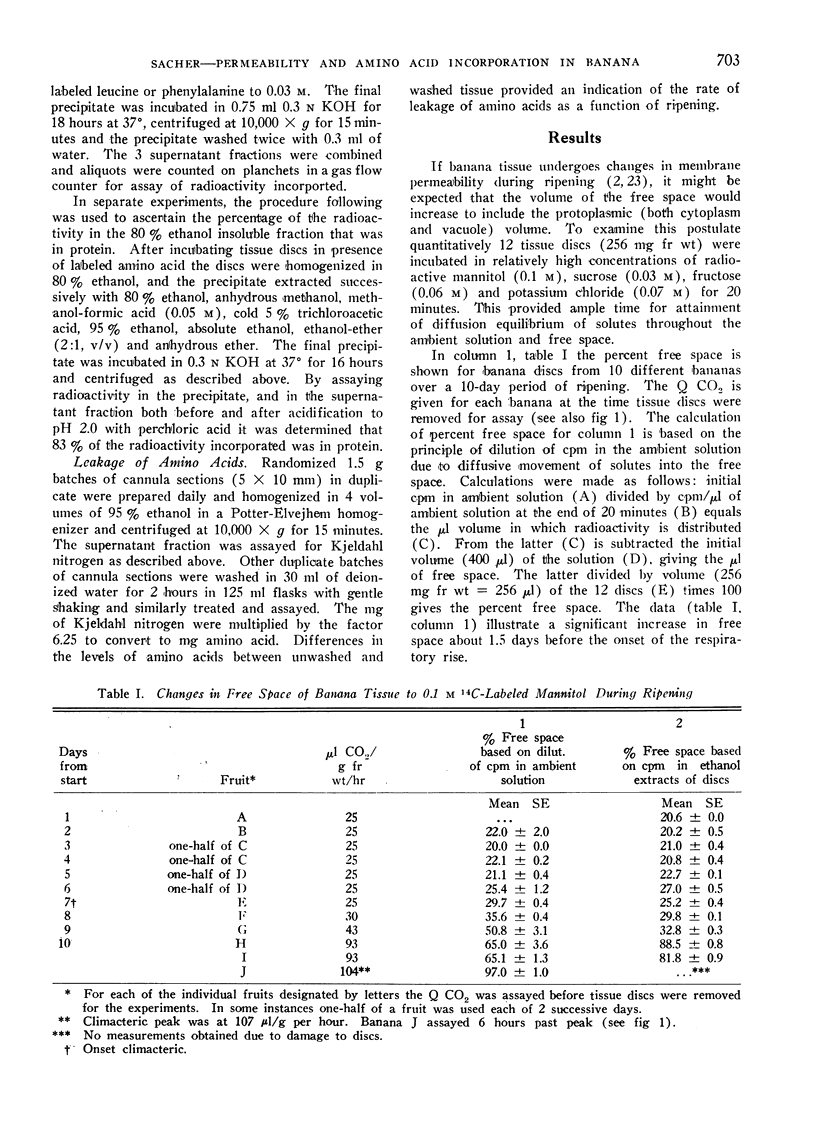
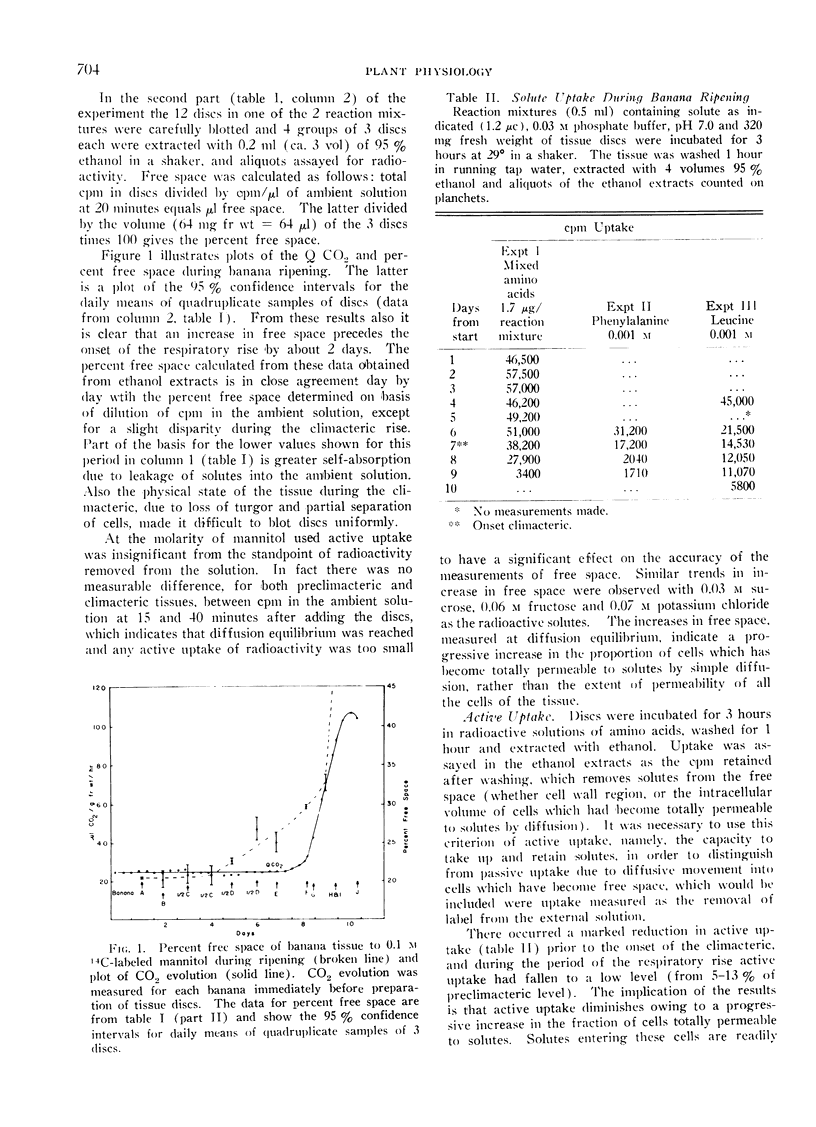
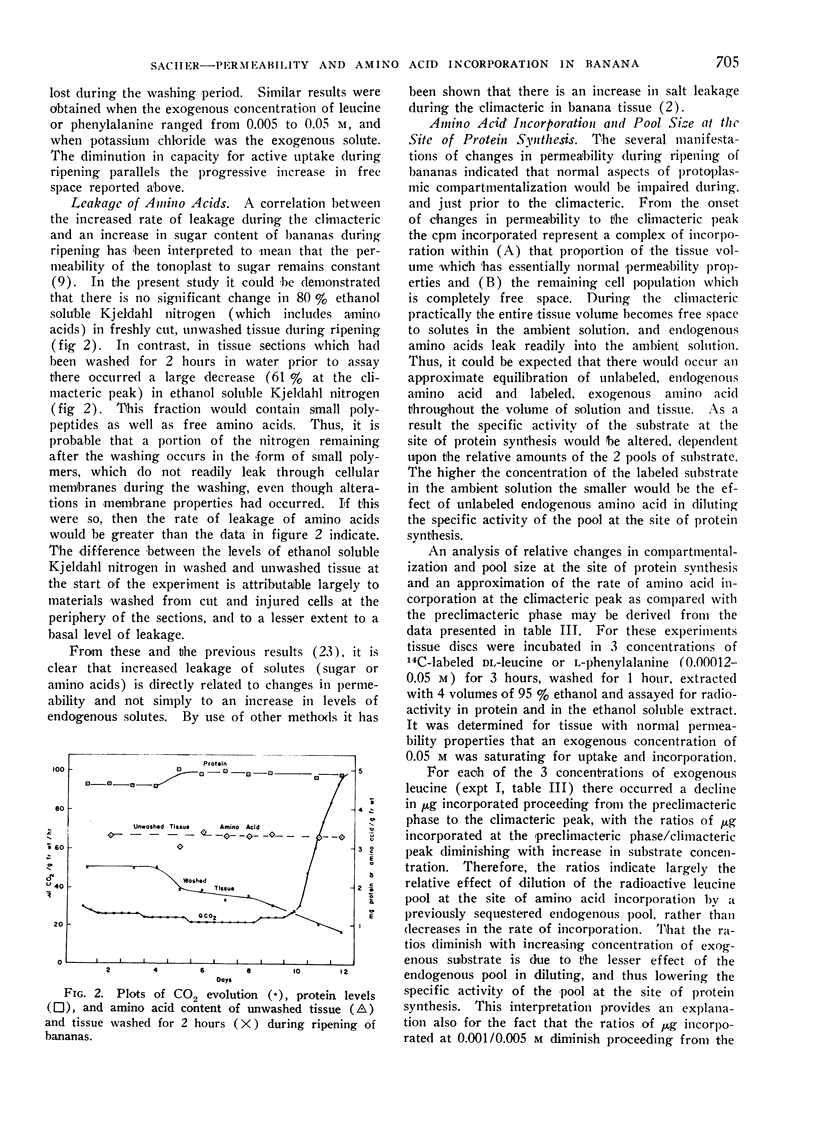
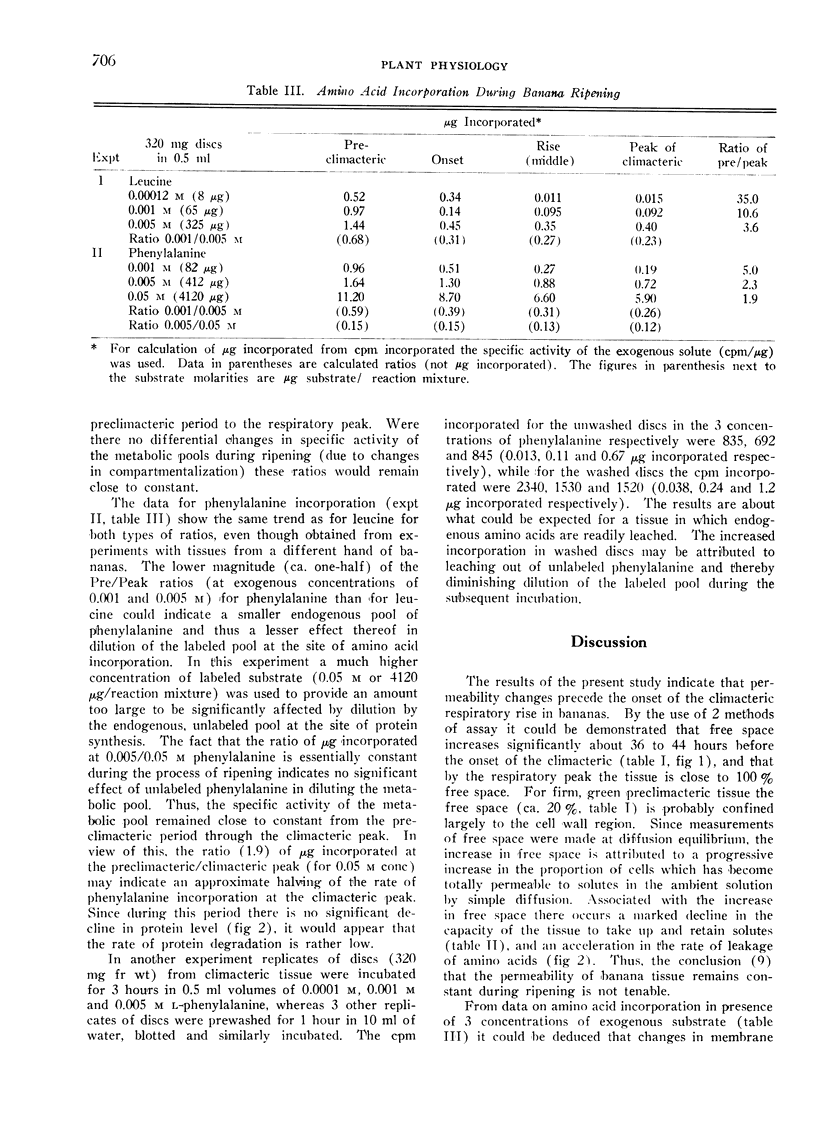
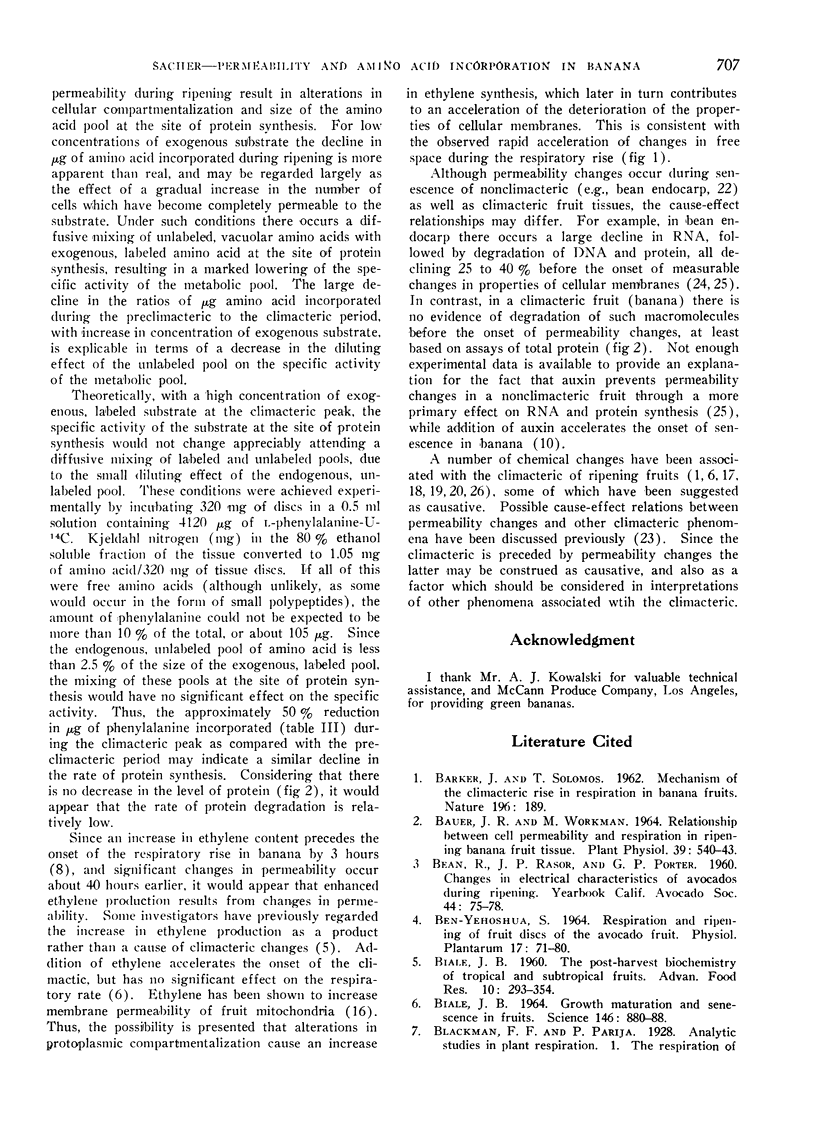
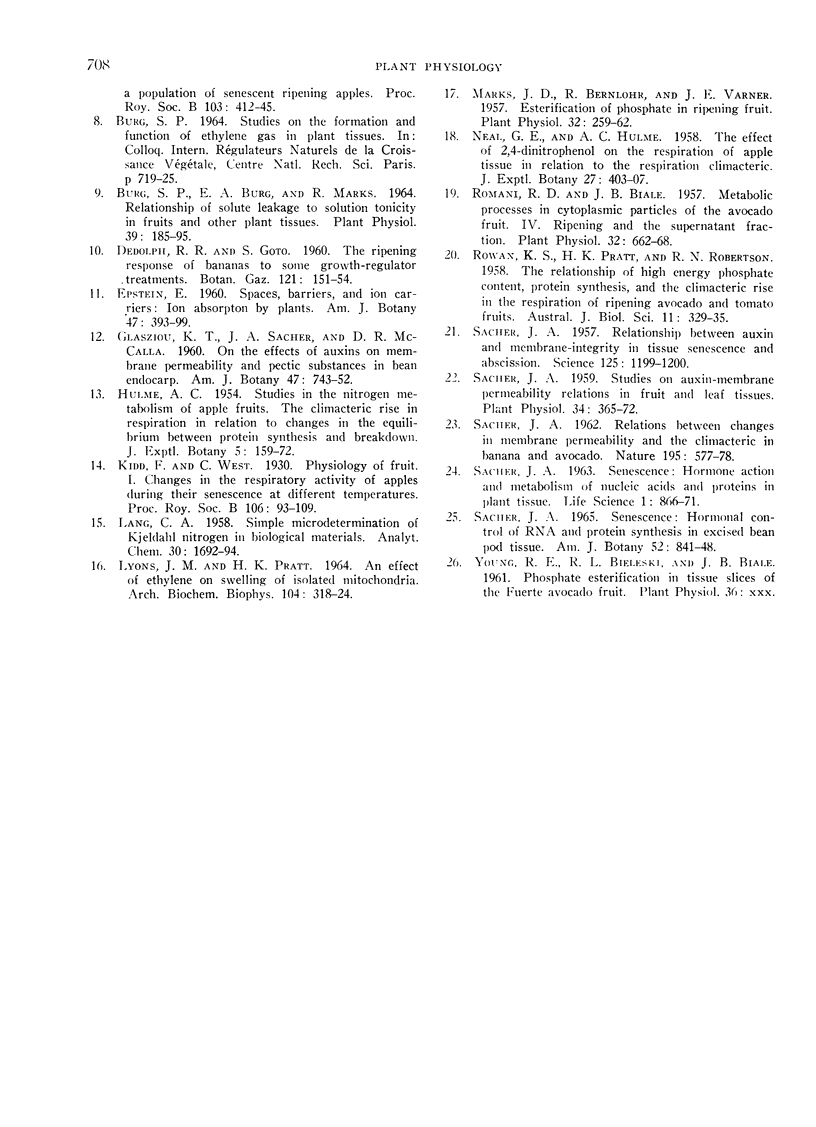
Selected References
These references are in PubMed. This may not be the complete list of references from this article.
- Baur J. R., Workman M. Relationship between Cell Permeability and Respiration in Ripening Banana Fruit Tissue. Plant Physiol. 1964 Jul;39(4):540–543. doi: 10.1104/pp.39.4.540. [DOI] [PMC free article] [PubMed] [Google Scholar]
- Burg S. P., Burg E. A., Marks R. Relationship of Solute Leakage to Solution Tonicity in Fruits and Other Plant Tissues. Plant Physiol. 1964 Mar;39(2):185–195. doi: 10.1104/pp.39.2.185. [DOI] [PMC free article] [PubMed] [Google Scholar]
- LYONS J. M., PRATT H. AN EFFECT OF ETHYLENE ON SWELLING OF ISOLATED MITOCHONDRIA. Arch Biochem Biophys. 1964 Feb;104:318–324. doi: 10.1016/s0003-9861(64)80020-5. [DOI] [PubMed] [Google Scholar]
- Marks J. D., Bernlohr R., Varner J. E. Esterification of Phosphate in Ripening Fruit. Plant Physiol. 1957 Jul;32(4):259–262. doi: 10.1104/pp.32.4.259. [DOI] [PMC free article] [PubMed] [Google Scholar]
- Romani R. J., Biale J. B. Metabolic Processes in Cytoplasmic Particles of the Avocado Fruit. IV. Ripening and the Supernatant Fraction. Plant Physiol. 1957 Nov;32(6):662–668. doi: 10.1104/pp.32.6.662. [DOI] [PMC free article] [PubMed] [Google Scholar]


